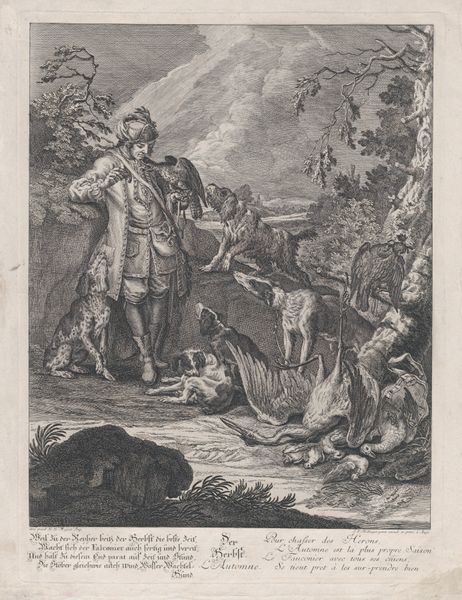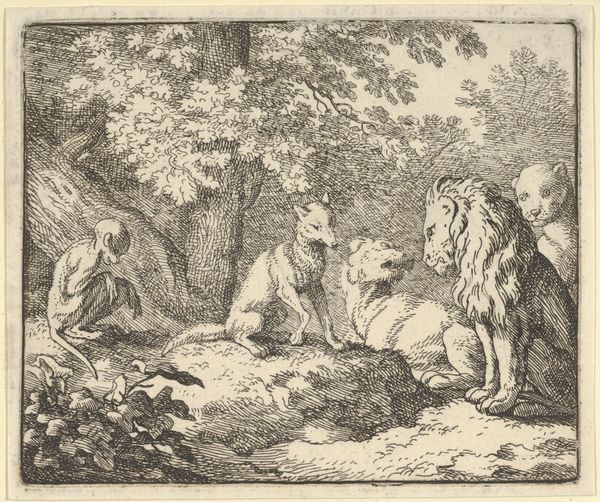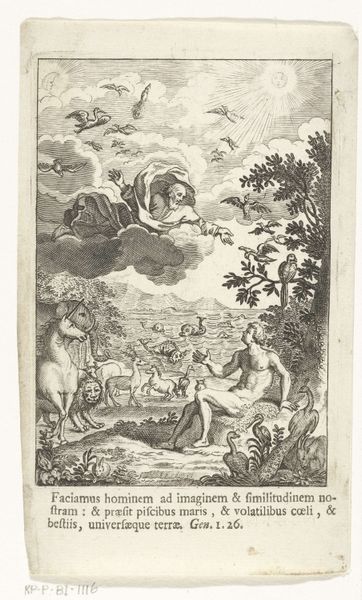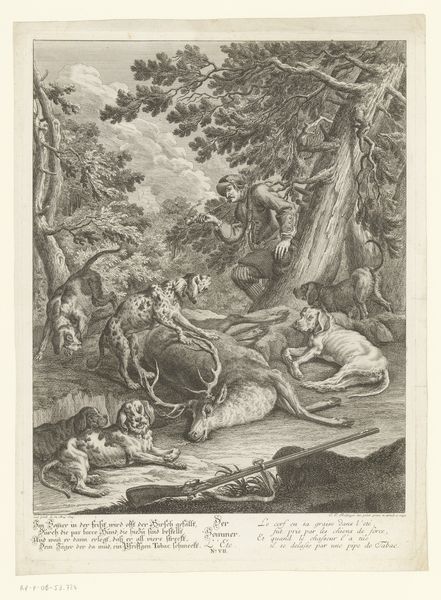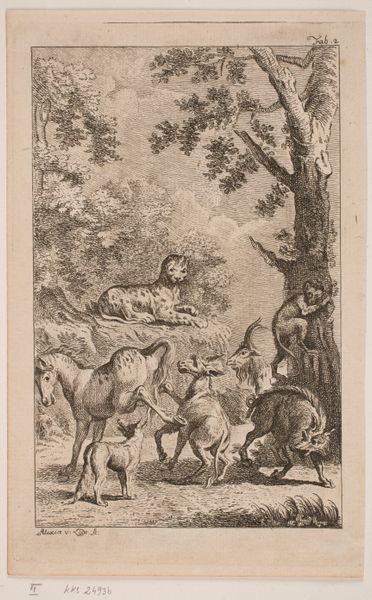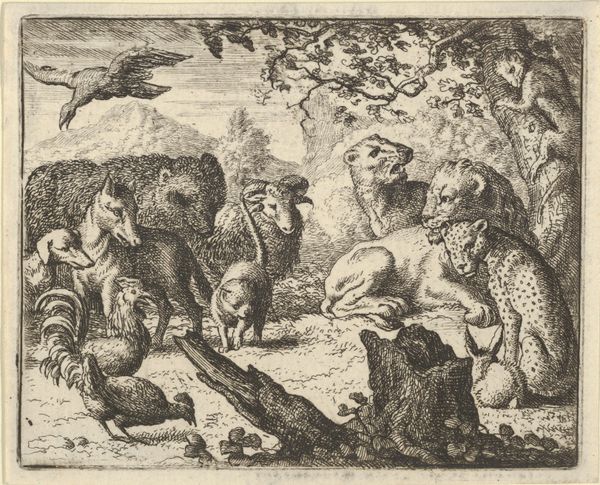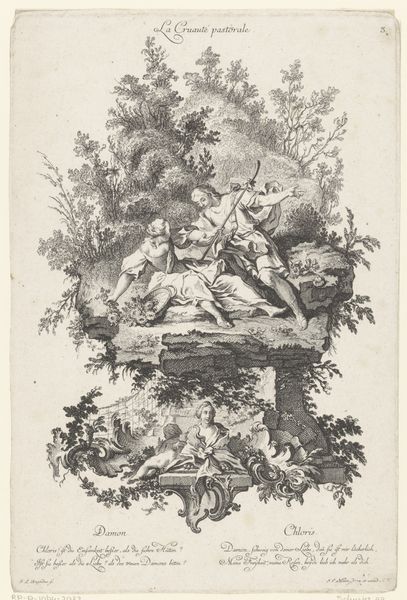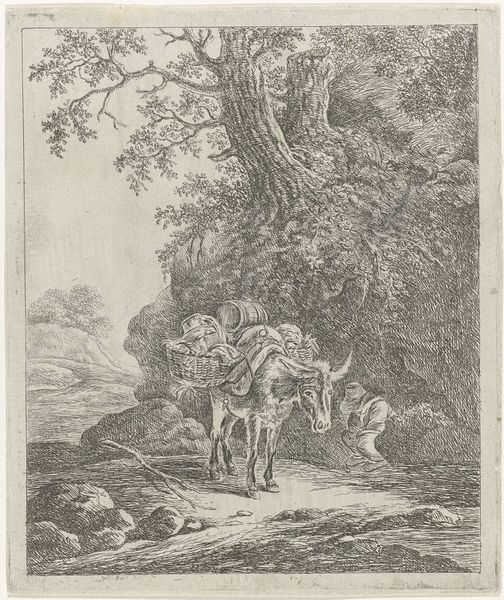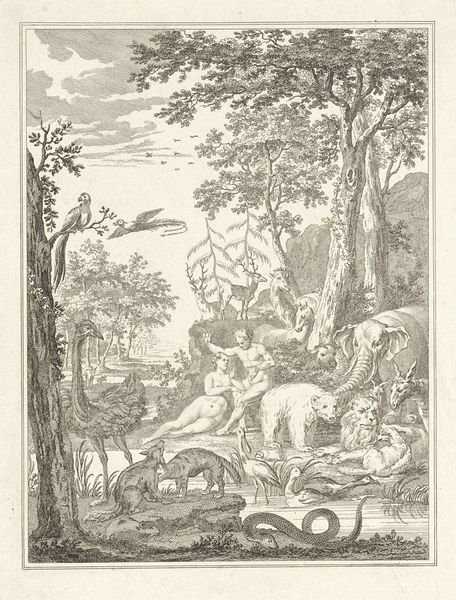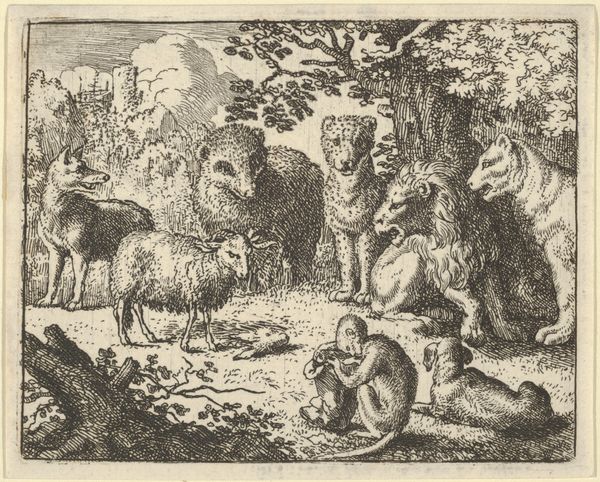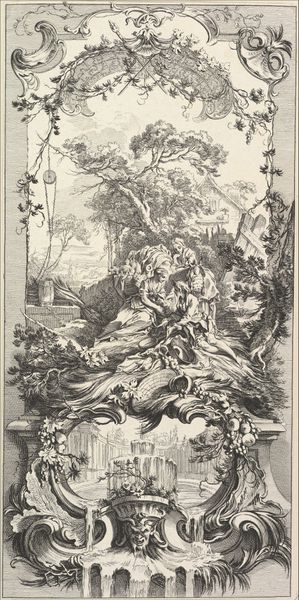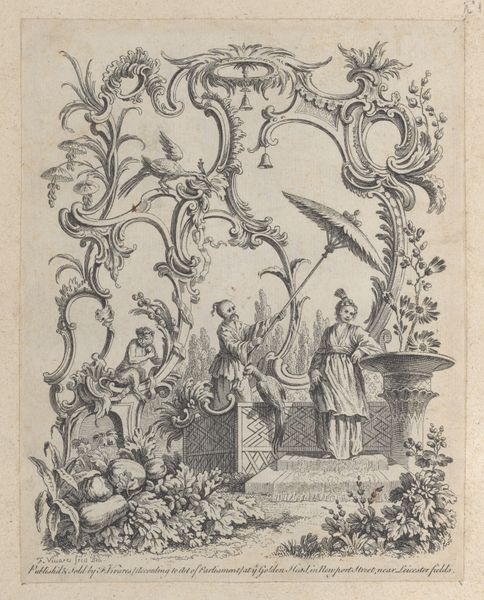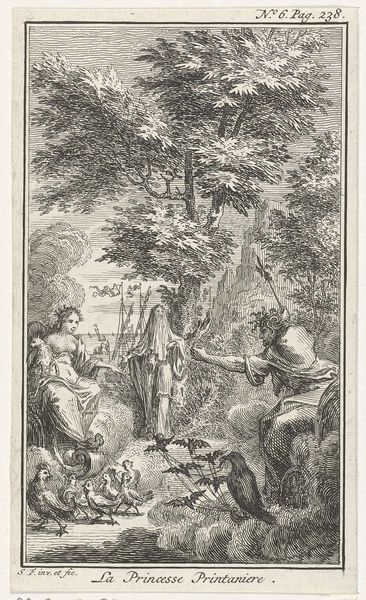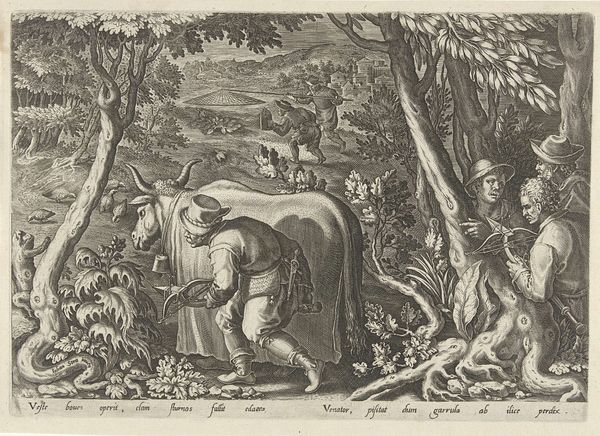
print, engraving
#
narrative-art
#
baroque
# print
#
landscape
#
etching
#
figuration
#
engraving
Dimensions: 200 mm (height) x 133 mm (width) (brutto)
Curator: Let's examine "The Young Lion and the Monkey," an engraving created around 1760 by Alexia von Lode. It depicts a menagerie of animals set against a rocky, almost theatrical landscape. Editor: It strikes me as strangely melancholic for a scene brimming with life. The etched lines, although meticulously rendered, feel…somber. Is it meant to be a moralizing image? Curator: Absolutely. The animal fable tradition, extremely popular then, served as a lens through which to examine societal structures and individual behaviours. Each animal carries symbolic weight rooted in both folklore and the prevailing social hierarchies of the 18th century. Consider how access to imagery—the means of representation—reflected societal power. Editor: I'm immediately drawn to the power dynamics so literally illustrated here, with the young lion appearing ready to pounce on the monkey. The deers, bulls and older lion appear as bystanders in some impending tragedy or as some odd royal court observing an execution. How do the visual cues reflect the broader themes of identity and domination in this piece? Curator: Look at the almost stage-like composition; the background rises dramatically. The animals aren’t interacting naturally; they're posed. Von Lode utilizes this constructed scenario to critique courtly life, possibly referencing how the powerful prey on the vulnerable while others passively observe, maintaining the status quo. We must consider how her aristocratic background shaped her perspective. Was she an insider offering subtle critique, or an outsider looking in? The monkey can be regarded as a commoner facing their monarch, an inevitable battle where common folk have nothing of value. Editor: Interesting point. The monkey’s desperate gesture becomes less about simple survival and more about navigating systemic injustice, a critique echoing through generations to our own present, and reflecting on gender and class relations that inform so many of today’s debates about institutional oppression. Curator: Precisely! This wasn't merely decorative; it was an articulation of complex political ideas. Even the seemingly benign landscape becomes a symbol of the structures that confine these creatures, influencing their interaction and survival. The image uses imagery that invites a critical view of the ruling classes. Editor: So, beyond its immediate aesthetic, this piece really becomes a historical document, revealing so much about the sociopolitical milieu of its time, viewed through a very particular lens that requires that we continue questioning it. Curator: Yes, art like this functions as a point of departure, asking viewers to question power, to challenge the stage upon which these dramas of dominance continue to play out.
Comments
No comments
Be the first to comment and join the conversation on the ultimate creative platform.
